The GA4 Audit Playbook Part 1
The next part will be released in one week. Give me a follow me on LinkedIn to keep updated as soon as this gets launched! Also, don’t forget to check out our audit products.
Account, Property, and Datastream Structure
Account Structure
Property Structure
- Your business type and best practices surrounding this, including property access permissions controls
- Whether or not you have the standard Google Analytics or Google Analytics 360 (as you get “sub” & “roll-up” properties).
Key Definitions
- A property is a grouping of data from a website and/or app.
- A sub-property is a subset of data from a GA4 property (available to 360 customers only).
- A roll-up property merges data from multiple properties (available to 360 customers only).
- If you only have one brand and operate in multiple markets then one property per market with a roll-up property combining these properties is sufficient.
- If you have multiple brands and multiple markets (at this stage GA360 is likely your only option at this scale) then you will need one property per brand and one sub-property per market.
Data Streams Structure
Scenario One
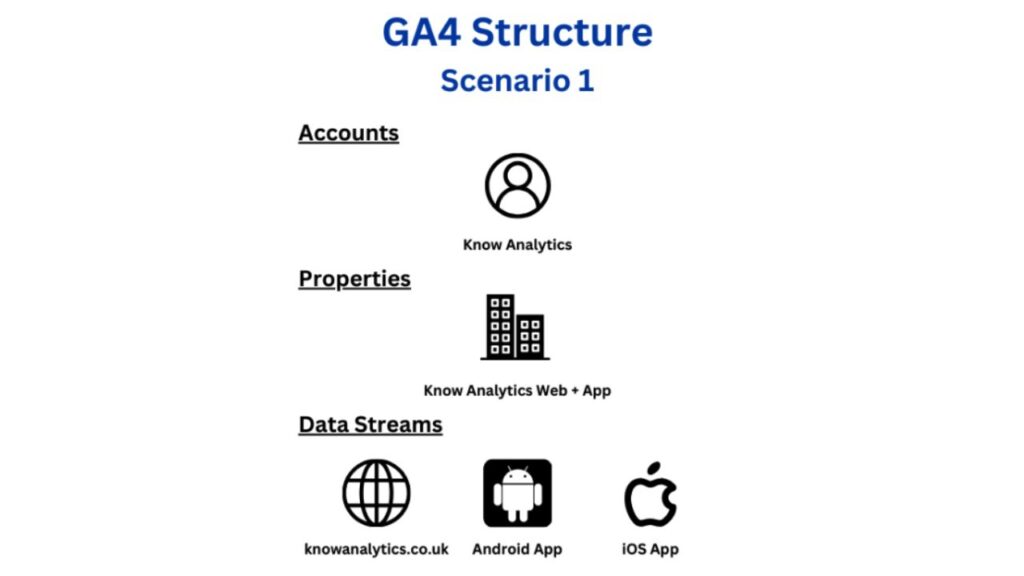
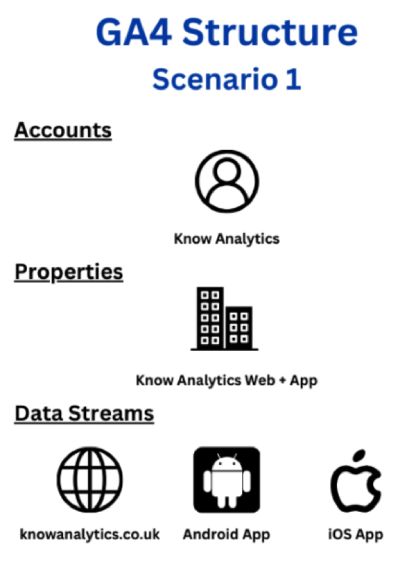
Scenario Two
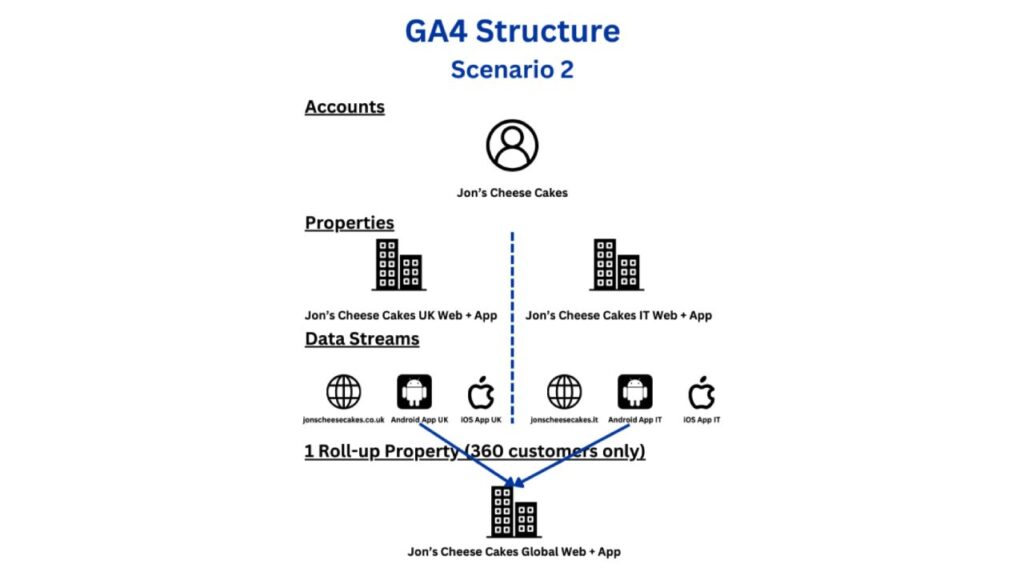
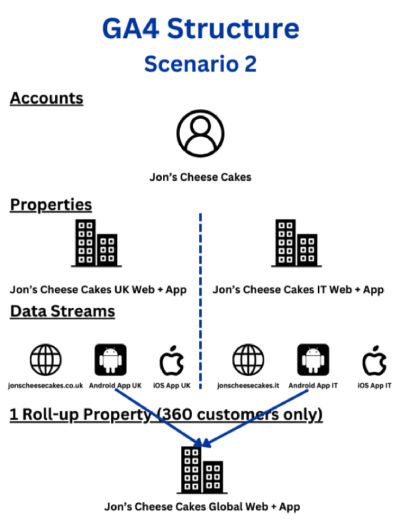
Scenario Three
Imagine a parent company with two different brands. Both brands cover two markets (UK and Germany). The parent company is called “Sue’s Mega Company” and the two brands are called “Cakes are the Best” and “Where Are the Cutlery” (complimentary I know…). Each brand and market has one website and one app. Then the structure should be as follows:
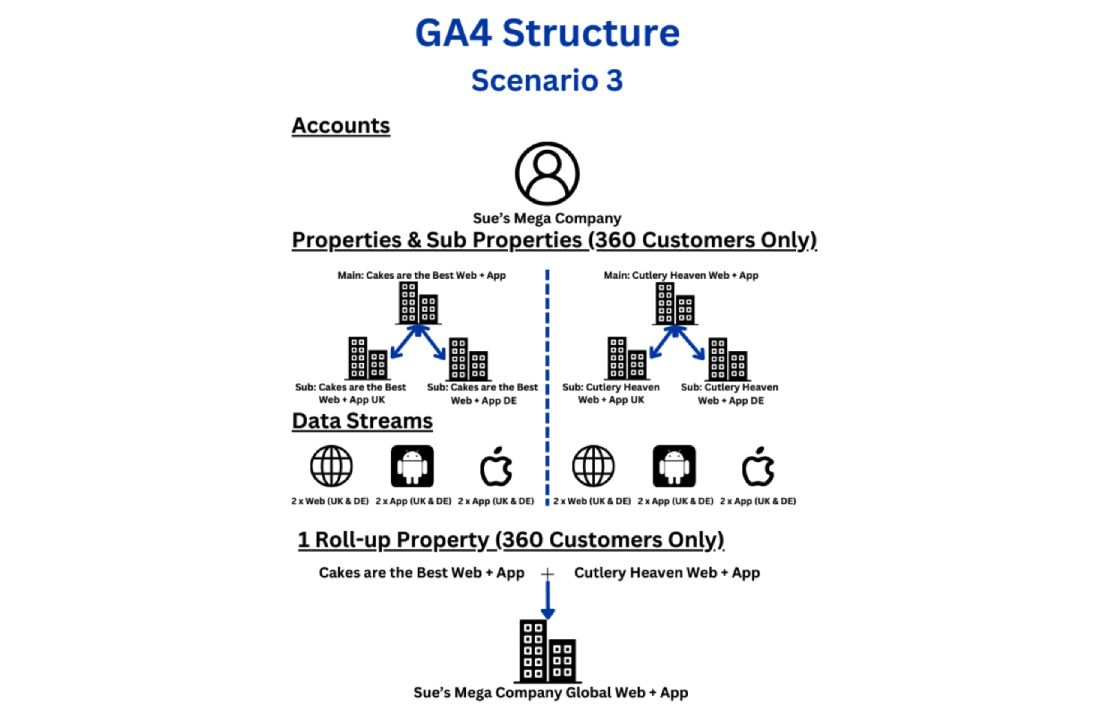
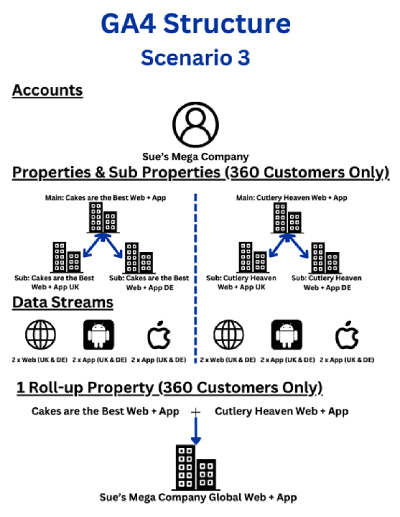
Tips on Restructuring
- If it's due to unnecessarily separating the properties by, for example, web vs app instead of web & app and only if your web & app are complimentary of each other then move the web or app property that has the least impact on your business within the other property by setting up new data streams within. If you need to analyse the historical data of the property that you have paused (and moved across to the other) then you will need to export and merge both properties' data externally.
- If it's due to excessively putting multiple markets and/or brands under one property then you will need to separate these markets and/or brands as suggested in scenarios 2 and 3. Note, if you are not experiencing any sampling and data thresholding whatsoever and can easily filter and analyse these brands and/or markets separately it might not be worth restructuring but it's important to understand that over time you might start seeing these data limits as more data is collected. Make sure to keep the main market and/or brand in the original property and move out the rest. If you need to analyse the historical data of the brands and/or markets you moved to new properties, follow the same suggestions given in the first tip.
Conclusion
Having a good Google Analytics structure is vital in understanding your brands, markets, websites and apps data clearly and concisely whilst ensuring there is no unnecessary “property bloating” which could impact data quality (more sampling and thresholding). If you are setting up GA4 for the first time, this is ideal as you can get this right from the start and mitigate any historical data view loss in the GA4 UI. Conversely, if you are restructuring your setup make sure you do so as soon as possible and follow the tips on this and how to view your historical data still as it is not all doom and gloom.
Follow me next week for part 2 “GA4 Configuration Checks”!
